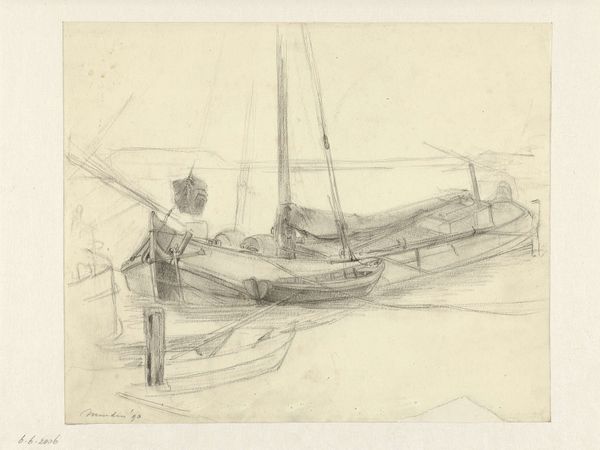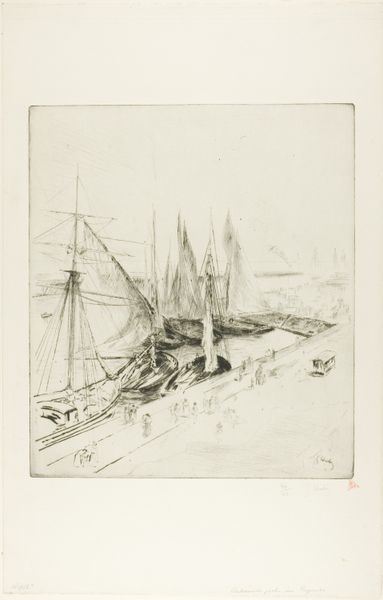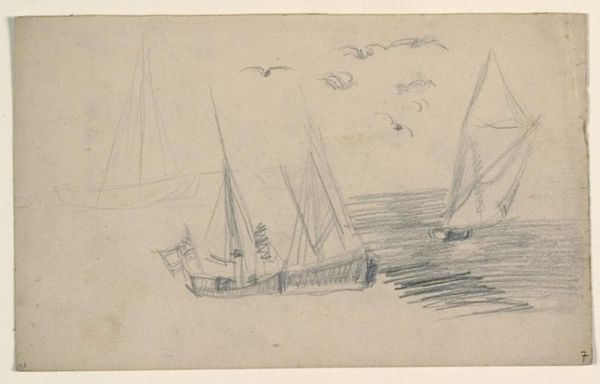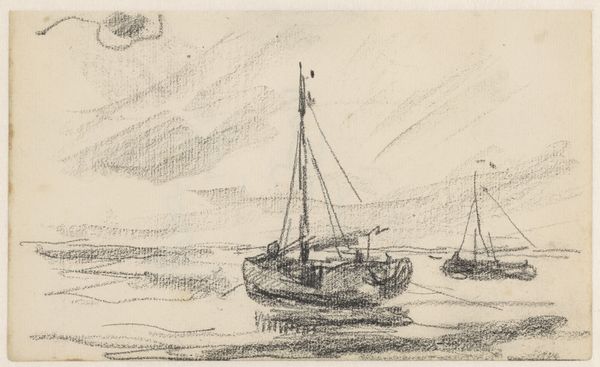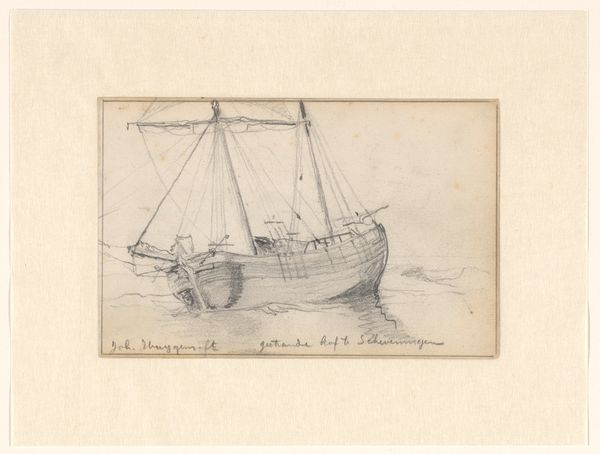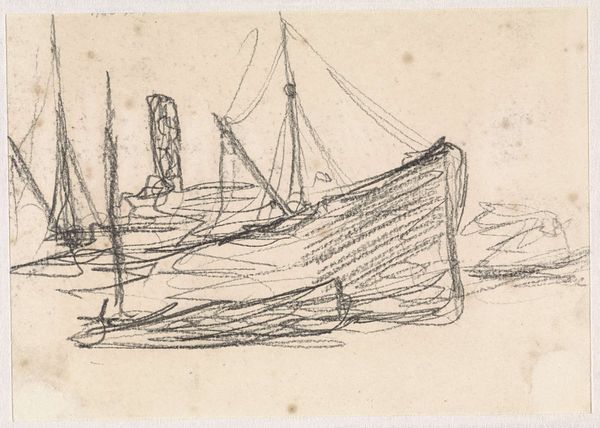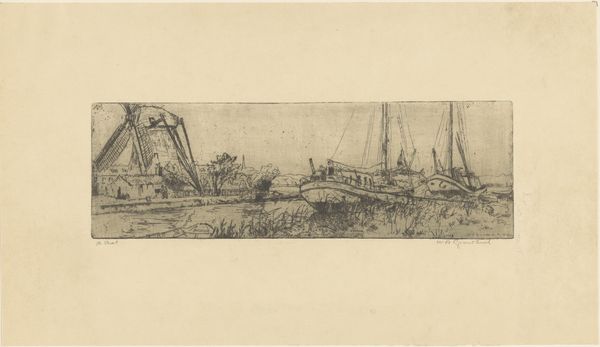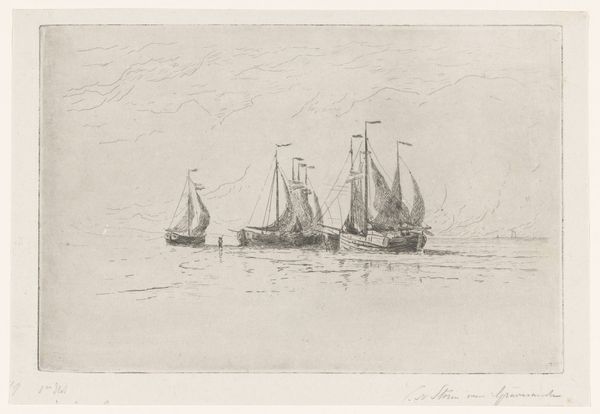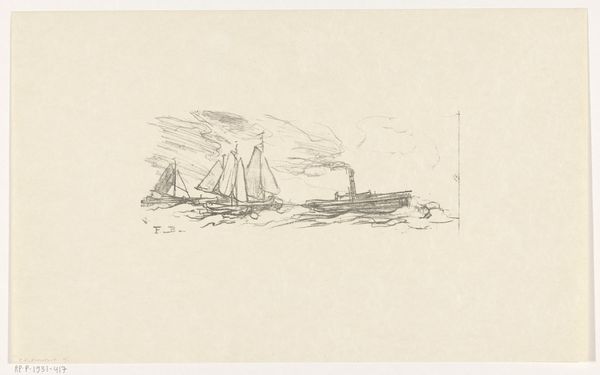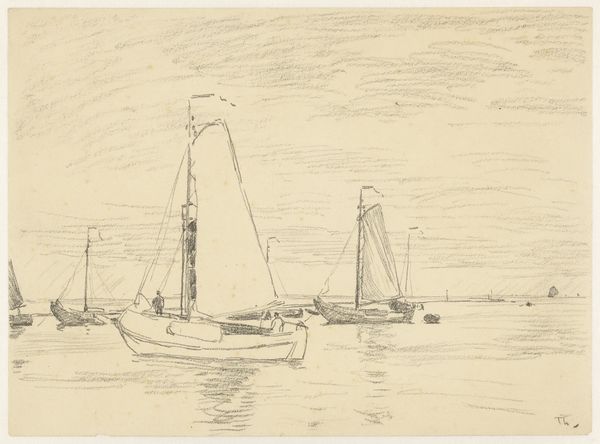
drawing, print, etching, ink, pencil
#
drawing
# print
#
etching
#
landscape
#
ink
#
pencil
#
cityscape
#
genre-painting
#
realism
Dimensions: height 102 mm, width 179 mm
Copyright: Rijks Museum: Open Domain
Editor: So, here we have "Fishing Boat on the Beach," an etching in ink and pencil by Philip Zilcken, created sometime between 1890 and 1930. There’s a sort of quiet, melancholy mood to it. What catches your eye in this work? Curator: Well, first, it’s interesting to consider how the vessel becomes a signifier. Boats are rarely *just* boats. They often represent journeys, transitions, and in this case, perhaps the dependence on nature's bounty but also its potential harshness. Notice the way the etched lines create a sense of fragility. Does that connect with your sense of melancholy? Editor: It does, yes. The thin lines almost make the boat seem temporary, like it could disappear with the tide. Curator: Exactly! And what do you make of the lone figure on the beach, facing the boat? Does he signify isolation, perhaps? Or a stoic acceptance of the fishing life? Consider that the image may signify cultural memory of those whose livelihoods are entwined with the sea and the constant negotiation between risk and reward. How might someone from a seafaring culture perceive this image differently than someone inland? Editor: That makes me think of how fishing communities often have very specific rituals and symbols tied to the sea and their boats, a respect for the water that someone like me might not immediately grasp. Curator: Precisely. This etching, seemingly simple, layers meaning through these symbolic relationships – man, boat, sea. The fragility we see in the etching, perhaps, mirrors the delicate balance of their existence. Editor: It’s fascinating to consider how an image like this carries so much cultural and historical weight through these repeated symbols. It definitely gives me a lot more to think about! Curator: And me too. The way the personal and collective experiences merge within such understated imagery—that's what makes it continue to resonate.
Comments
No comments
Be the first to comment and join the conversation on the ultimate creative platform.

